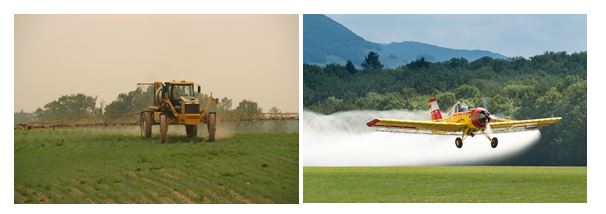By: Chuck Abbott , Successful Farming
In the name of making safety regulations easier to implement, the EPA proposed on Thursday to reduce the size of buffer zones intended to protect people from exposure to pesticides during their application on the farm. Environmental and farm worker groups said the proposal would increase the risk of pesticides being sprayed on or drifting onto workers, neighbors, and passersby.
The EPA said it was making “modest, clarifying updates” to the 2015 regulation that requires so-called application exclusion zones around equipment applying pesticides. “One of the most repeated requests” from state pesticide regulators, said the EPA, has been for simpler rules. “Cost savings from the changes are largely in terms of reducing management complexity both on and off establishment.”
Environmental and farm worker groups had a different take. “The end result is reduced protection in the application exclusion zone,” said Iris Figueroa, a lawyer for the advocacy group Farmworker Justice. Ken Cook of the Environmental Working Group said smaller buffer zones will mean more risk of exposure. “Not a single farmworker justice, environmental, or public health group supports [administrator Andrew] Wheeler’s latest capitulation to the pesticide lobby,” he said.
At present, a buffer zone of 25 feet is required around sprayer rigs that release large droplets more than 12 inches above the ground, and a 100-foot zone is required for aerial, air blast, and ground applications that release fine or very fine droplets as well as fumigations, mists, and foggers. Buffer zones extend beyond the boundaries of a field, possibly onto roadways or neighboring buildings, and pesticide handlers are supposed to immediately stop an application if someone enters or is inside the restricted area.
Under the EPA proposal, the buffer zone would end at a farmer’s property line. “As currently written, the off-farm aspect of this provision has proven very difficult for state regulators to enforce,” said the agency. “Off-farm bystanders would still be protected from pesticide applications due to the existing ‘do not contact’ requirement that prohibits use in a manner that would contact unprotected individuals.”
The EPA rule would revise the buffer zone to 25 feet for all ground applications and to 100 feet for aerial, air blast, air-propelled, fumigant, smoke, mist, and fog pesticide applications.
“I applaud EPA’s action to provide growers relief from a very cumbersome requirement,” said Georgia Agriculture Commissioner Gary Black.
The EPA said it will accept public comments for 90 days once its proposal appears in the Federal Register.
To read the proposed EPA rule, click here. https://www.epa.gov/sites/production/files/2019-10/documents/prepubcopy_9995.47_fr_doc_administrator_signature_2019-10-24.pdf







